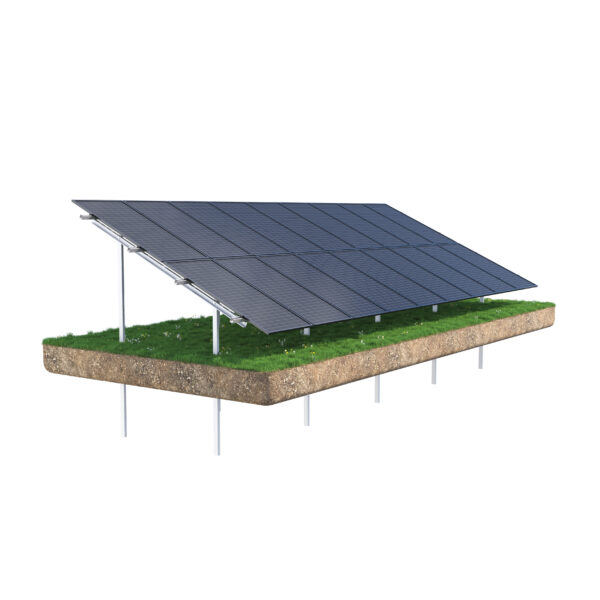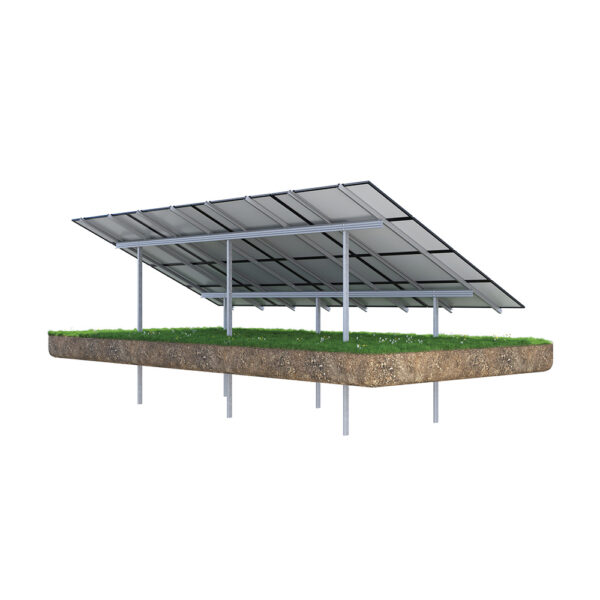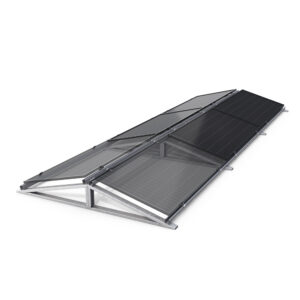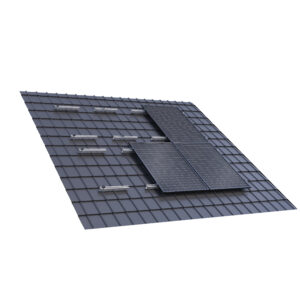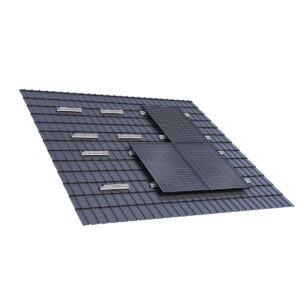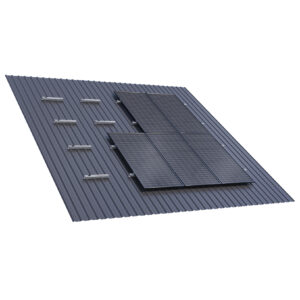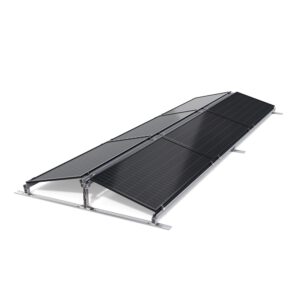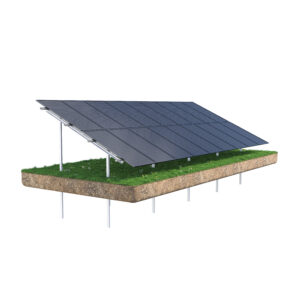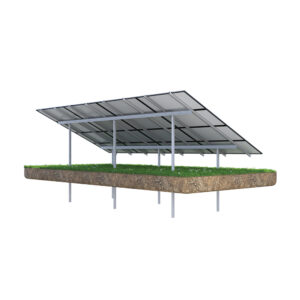Solar ground mounting system
What Is a Solar Panel Ground Mounting?
A solar panel ground mounting is a type of structure used to install photovoltaic (PV) panels on open land instead of on rooftops. Ideal for homeowners, businesses, and solar farms with unused space such as fields, plots, or vacant land, solar panel ground mounting systems offer flexibility in placement and angle adjustment. This ensures optimal sun exposure and, as a result, higher energy efficiency.
At Enzeit, we provide high-performance solar panel ground mounting kits made from durable materials like galvanized steel and aluminum. These systems are built to endure harsh weather, provide long-term stability, and deliver reliable energy output year-round.
Ground Mount Racking vs Roof Structure – What’s the Difference?
While rooftop installations are common, they’re often limited by roof size, angle, load-bearing capacity, and shading. Ground mount racking eliminates these constraints, allowing you to install more panels and place them at the optimal tilt and orientation.
Unlike roof systems, ground mount solar racking requires foundations such as driven piles, concrete bases, or ballast systems. These foundations provide exceptional stability even on uneven terrain or in areas with high wind loads. With ground mounting structures, panels are easier to access for cleaning and maintenance, and there’s no impact on your building’s structure.
How to Choose the Right Ground Mount Solar Racking for Your Installation
Selecting the right ground mount racking depends on several key factors:
- Soil type: Soft soil may support driven steel piles, while rocky or unstable areas may require concrete or ballast foundations.
- Site conditions: Consider wind speeds, snow loads, drainage, and terrain slope.
- Installation size: Larger installations often require more robust racking systems and deeper foundations.
- Accessibility: Easy access may be important for ongoing maintenance or system monitoring.
Enzeit’s engineering team can help assess your site and recommend the best ground mount solar racking based on local conditions and energy goals.
Common types of foundations used:
- Driven steel piles – Quick installation with minimal land disruption, ideal for soft or medium soils.
- Concrete foundations – Suitable for areas with poor soil or where maximum anchoring is needed.
- Ballast systems – Used in leased areas or rocky ground where drilling or excavation is impractical.
Ground Mount Racking Systems Built for Performance and Stability
Our ground mounting structures are designed to deliver exceptional performance in all conditions. Whether you’re in a region with heavy snow, high winds, or intense sun, Enzeit’s ground mount racking systems provide:
- High corrosion resistance using quality materials like aluminum or hot-dip galvanized steel.
- Compatibility with both framed and frameless solar modules.
- Flexible panel layout for scalable installations.
- Custom tilt angle adjustment—typically 30–40°—to match site latitude and seasonal sun exposure.
Advanced setups may also include single-axis or dual-axis tracking systems that follow the sun’s movement, boosting efficiency by up to 30%.
Installation and Long-Term Benefits
Installing a solar panel ground mounting kit takes more initial effort than a rooftop system, as it requires land preparation and foundation construction. However, the long-term benefits far outweigh this early work:
- No limitations from roof capacity or shading
- Easier maintenance and accessibility
- Better airflow around panels, improving lifespan and cooling
- Potential for system expansion in the future
Though the upfront cost of solar panel ground mounting systems may be higher, they offer unmatched flexibility and energy optimization—especially for large or off-grid installations.
At Enzeit, we combine industry-leading design with proven durability to ensure every system performs flawlessly, no matter the conditions.
Latest products and industry news

